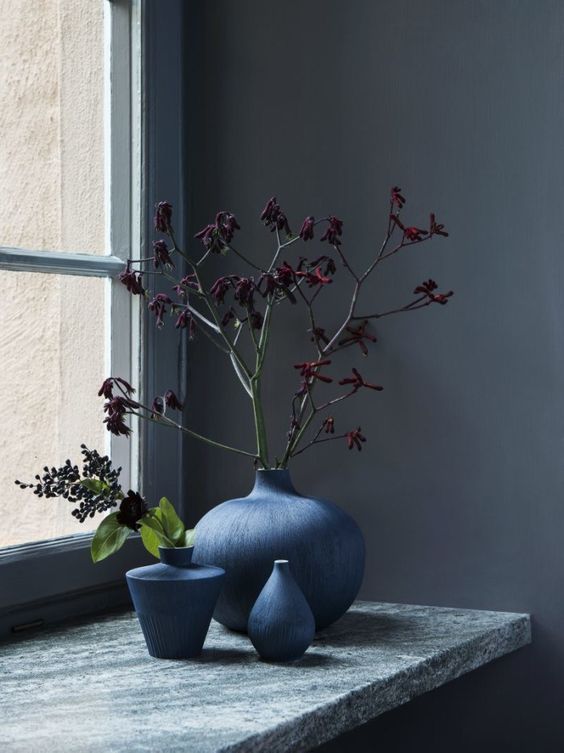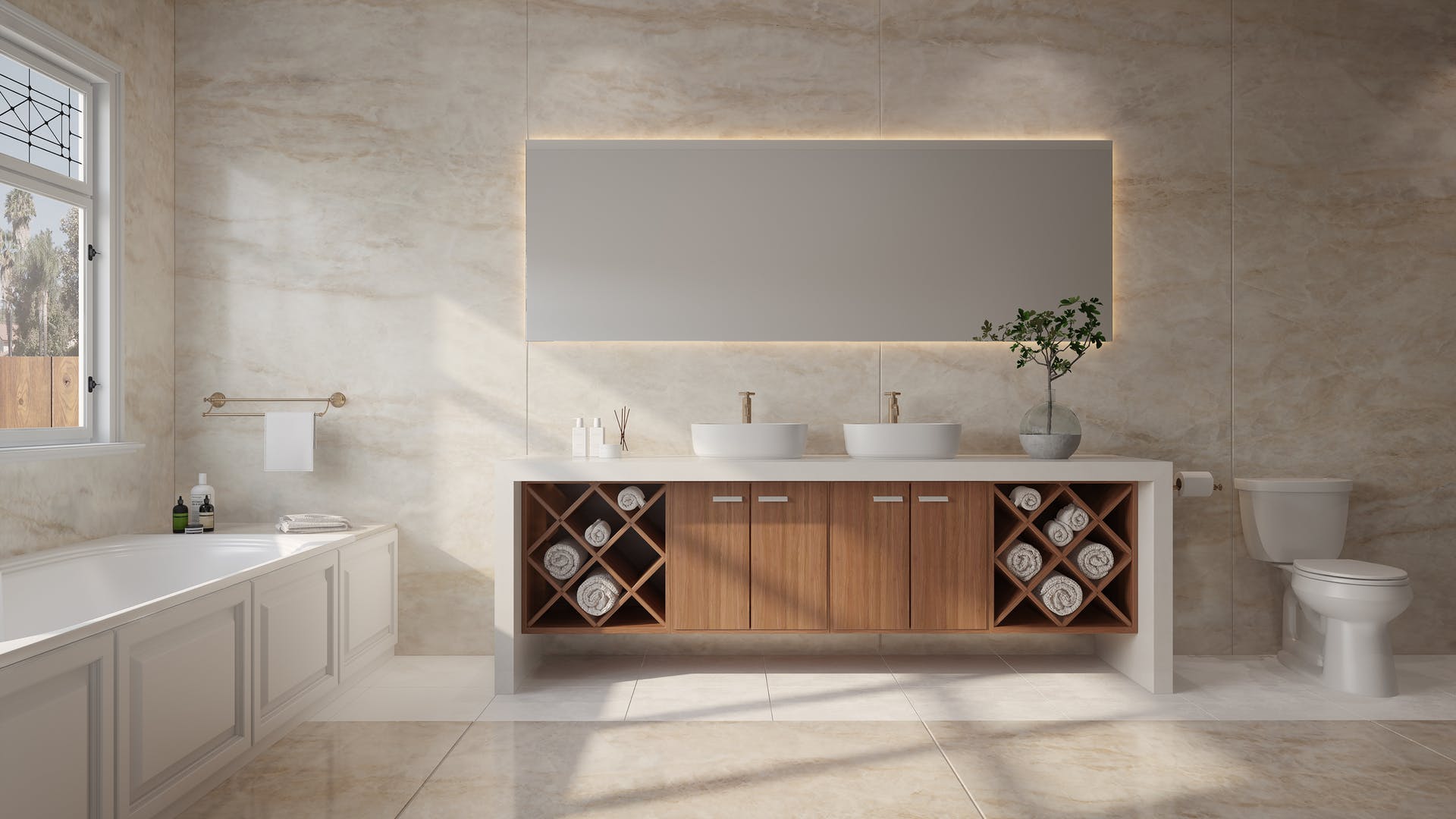Stone finish
Stone finish
Stone fireplace finish
All natural stones
(marble, granite, onyx, travertine) and DEKTON materials are suitable for fireplace finish.
Quartz materials will not be suitable for hot areas
because their binder is resin. In contact with heat, the resin can cause blemishes, deformation and even give off an unpleasant odor. However, nowadays, most fireplaces are treated so that there is no hot surface around them, in which case quartz stones can also be chosen. So do artificial fireplaces.
Marble, onyx, granite, various profiles look great for a classic-style fireplace, but DEKTON materials or some more uniform granite are better suited for a more modern interior.
Stone windowsills
The window sills
can be 1.2, 2, and 3 cm thick. There have been cases where, according to the architect or designer, window sills are even thicker - up to 10 cm. In such cases, they are made in 45 degree technology, the seam is at the fracture point and is practically invisible. Such thick windowsills are more often chosen by proponents of ascetic and minimalist style, who like clean and straight lines.
Outdoor windowsills
Often customers also choose stone exterior windowsills that match the color of the stone plinth or staircase. Outdoor window sills are usually made on a slight slope for rainwater runoff, but special incisions can also be made.
Indoor windowsills
Low windowsills - often used for seating in public spaces, often deeper than standard windowsills.
There is always enough sunshine on the windowsills, so we love to place different indoor plants there, which in turn are often watered, and in that case tree or mdf will definitely bloat and deform after some time. By contrast, the water left on the stone windowsill simply dries without leaving a trace and does not change the shape or appearance of the window sill.
In our latitudes, there is heater below the windowsills. To cover it visually, the sill is formed deeper, over the radiator. Different types of holes for circulating hot air can be milled in stone windowsills. They can be left exposed, or they can be fitted with metal bars.
If the windowsill is at a sufficient distance above the radiator, it may be possible to do without cuts.
Stair stone finish
The advantage of granite for stairs and squares, unlike tiles, is the absence of seams, the extra weight and the long-term good appearance.
Frequent guests at our stone processing plant are tile stair owners in the spring when exterior stair tiles and tiled areas have been re-separated due to frost and our specific climate. As a result, after repeated tiling, the customer finally decides to choose granite steps and granite areas.
Built-in LED lamps look great on the granite steps for added comfort in the dark. Door mats of all sizes and functions are almost always built into the surface of a granite staircase.
Often, both internal and external granite stairs are fitted with different anti-slip bands. We offer a variety of embedded metal bands, multiple embossing and bands.
It is important that foundation of concrete stairs are immediately concreted, so that over time they "do not walk" and everything that is put on them does not fall off. The much more expensive "joy" is to dismantle it all and rebuild it.
VIA does not dismantle or restore old stairs. Also, it is not possible to accurately measure until these jobs have been completed.
Stone caps
As a continuation of the exterior granite steps and granite areas, the home plinth is part of the same granite or cleverly matched granite of another color. The plinth can be a few centimeters high or several meters high. Most importantly, it should be installed deeper than the pavement. Often we see a technologically incorrectly constructed and mounted stone plinth or improperly prepared surface before the stone plinth is installed. Often an empty seam or hole is formed between the part of the stone plinth and the cobblestone or other ground cover due to slipping or "walking" of the foundations of the house. Lime runoff at the joints damages the overall view.
The plinth part can be made of polished, matte, lacquered and burnt granite. It's just a matter of taste. In terms of practicality and cost, all three are equal. Dust and other dirt from these stones are easily rinsed off with a garden watering hose. The stone plinth is often chosen by large dog owners so that the nails, tails and teeth of the animals do not damage the overall appearance of the home's facade. We recommend that you apply a protective layer of special fluid made for stone. This will intensify the stone tone and "repel" dirt.
Pool stone borders
For swimming pools, as well as other places where there is high humidity - baths, saunas, etc. -, it is important to choose a non-slip material. It could be some burnt or brushed granite as well as some DEKTON matte materials. GRIP + anti-slip processing is available for additional slip protection for some tones of DEKTON.
Floor stone finish / areas
It is also possible to use different heating technologies for stone floors, exterior granite stairs and granite areas to prevent the entry unit from freezing and slipping in winter.
No additional heating is required for other stone surfaces located indoors because the stone accepts room temperature when adjusting to it.
It is also possible to incorporate a doormat in the stone.
VIA does not carry out concreting / leveling or dismantling old floor finishes. We go for measurements, when these jobs have already been done.
Wall stone finish
Address
Starta Street 5, Riga, LV-1026(next to Brasas Bridge)
Contacts
SIA "VIA"
Reg. nr.: 41203000663
PVN nr.: LV41203000663
Bank: A/S "Swedbank", HABALV22
Account: LV08HABA0001408048200





































